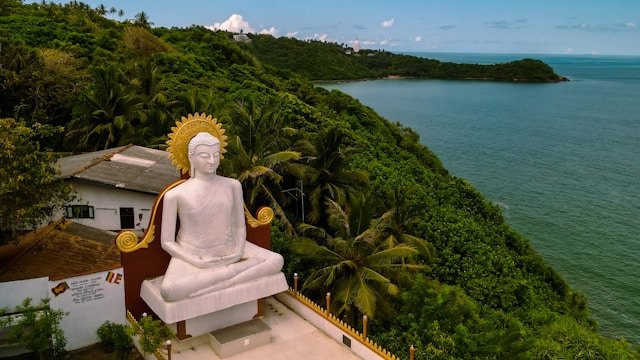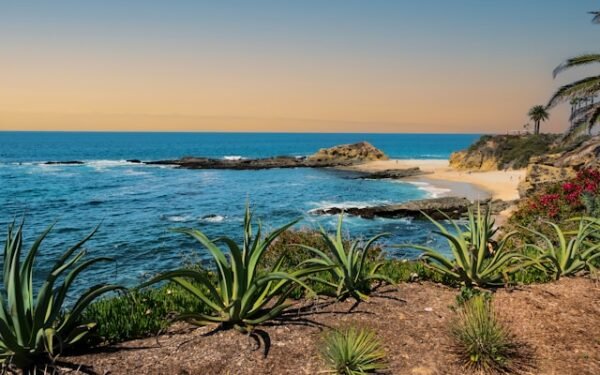Cultural Tourism in Sri Lanka: Top 10 Destinations for an Immersive Heritage Experience

Sri Lanka, an island known for its breathtaking landscapes, also boasts an extraordinary cultural heritage that spans thousands of years. Ancient kingdoms, religious monuments, traditional crafts, and vibrant festivals are woven into the tapestry of Sri Lankan life, making it an ideal location for cultural tourism. Cultural tourism in Sri Lanka offers travellers the opportunity to dive deep into the country’s historical roots and witness its unique customs, art, and architecture.
Here’s a list of the top ten destinations that showcase the best of Sri Lanka’s cultural treasures.
1. Sigiriya – The Ancient Rock Fortress
- Historical Background: Sigiriya, also known as the “Lion Rock,” is a UNESCO World Heritage Site and an ancient rock fortress dating back to the 5th century. King Kashyapa built it as a royal residence and defensive stronghold.
- Key Attractions: The frescoes of maidens, the Lion’s Paw entrance, and the elaborate water gardens surrounding the fortress are highlights that demonstrate advanced ancient engineering.
- Why Visit: As one of Sri Lanka’s most iconic sites, Sigiriya offers an unforgettable glimpse into the island’s ancient royalty and architectural prowess, making it a cornerstone for cultural tourism in Sri Lanka.
2. Anuradhapura – The Cradle of Buddhist Heritage
- Historical Background: Founded in the 4th century BCE, Anuradhapura was Sri Lanka’s first capital and served as a major centre of Buddhist scholarship and devotion.
- Key Attractions: The city is home to the sacred Bodhi Tree, believed to be a sapling from the original tree under which Buddha attained enlightenment. Its stupas, such as Ruwanwelisaya, are some of the largest brick structures in the world.
- Why Visit: Anuradhapura is an essential destination for anyone interested in spreading Buddhism, as it provides an authentic sense of Sri Lanka’s religious and cultural roots.
3. Kandy and the Temple of the Tooth
- Historical Background: Kandy, the last capital of Sri Lanka’s ancient kings, is famous for housing the Temple of the Tooth Relic, one of Buddhism’s most revered relics.
- Key Attractions: The Temple of the Tooth (Sri Dalada Maligawa) holds annual ceremonies and daily rituals that attract both local and international visitors. Kandy’s surrounding lake and hilly landscapes add to the city’s serene atmosphere.
- Why Visit: Cultural tourism in Sri Lanka is incomplete without a visit to Kandy, especially during the Esala Perahera festival when the tooth relic is paraded in a grand procession.
4. Polonnaruwa – Sri Lanka’s Medieval Marvel
- Historical Background: Following the decline of Anuradhapura, Polonnaruwa became Sri Lanka’s second capital and thrived during the 11th and 12th centuries.
- Key Attractions: The Gal Vihara rock temple, with its massive Buddha statues, the Royal Palace, and the Rankot Vihara stupa showcase Polonnaruwa’s architectural grandeur.
- Why Visit: Known for its well-preserved ruins, Polonnaruwa provides a fascinating glimpse into medieval Sinhalese civilization, making it an essential stop for cultural tourism in Sri Lanka.
5. Dambulla Cave Temple – A Treasury of Buddhist Art
- Historical Background: Dating back over 2,000 years, the Dambulla Cave Temple is a complex of five caves filled with ancient statues and paintings.
- Key Attractions: The interior of the caves is adorned with vivid paintings depicting Buddha’s life, and the statues, some of which are carved directly into the rock, represent different aspects of Buddhist history and art.
- Why Visit: The Dambulla Cave Temple stands as a testament to Sri Lanka’s artistic legacy and religious devotion, offering travellers a unique glimpse into the country’s spiritual heritage.
6. Jaffna – A Blend of Tamil Culture and Heritage
- Historical Background: Jaffna, the cultural heart of northern Sri Lanka, has a history that reflects a mix of Hindu and colonial influences.
- Key Attractions: The Nallur Kandaswamy Temple, with its vibrant Tamil architecture, the Jaffna Library, and the Jaffna Fort, offer insights into the region’s unique heritage.
- Why Visit: Jaffna is an ideal destination for experiencing Tamil cultural tourism in Sri Lanka, with its rich customs, cuisine, and architecture that distinguish it from the rest of the island.
7. Galle Fort – Colonial Heritage by the Sea
- Historical Background: Built initially by the Portuguese and later fortified by the Dutch in the 17th century, Galle Fort is a UNESCO World Heritage Site that remains remarkably well-preserved.
- Key Attractions: The fort’s cobblestone streets, Dutch-style buildings, and historic lighthouse add a European flavour to Sri Lanka’s cultural tourism sites.
- Why Visit: Galle Fort offers a unique blend of Sri Lankan and colonial history, set against a stunning coastal backdrop. It’s a must-visit for those interested in the island’s colonial legacy.
8. Colombo – The Modern Capital with Historical Roots
- Historical Background: Colombo, Sri Lanka’s vibrant capital, is a city with a long history influenced by Portuguese, Dutch, and British colonial periods.
- Key Attractions: The National Museum, the Gangaramaya Temple, and the Pettah Market highlight Colombo’s mix of ancient and modern culture.
- Why Visit: As a melting pot of Sri Lankan cultures, Colombo is a lively hub where traditional and contemporary lifestyles blend seamlessly, offering a different dimension of cultural tourism in Sri Lanka.
9. Mihintale – The Birthplace of Buddhism in Sri Lanka
- Historical Background: Mihintale is said to be where Buddhism was introduced to Sri Lanka in the 3rd century BCE when the Indian monk Mahinda met King Devanampiya Tissa.
- Key Attractions: This sacred site includes numerous stupas, meditation caves, and shrines nestled into a hill that visitors can climb.
- Why Visit: Mihintale is considered the birthplace of Buddhism in Sri Lanka, and visiting it offers a peaceful and spiritual journey into the island’s religious history.
10. Ratnapura – The City of Gems and Folklore
- Historical Background: Ratnapura, known as the “City of Gems,” has been an important gem-trading hub for centuries, particularly for sapphires, rubies, and other precious stones.
- Key Attractions: The gem mines, traditional gem markets, and the National Museum of Ratnapura are major draws. Additionally, the Saman Devalaya temple is a site for local worship and legend.
- Why Visit: For those interested in local craftsmanship and folklore, Ratnapura is an interesting destination that showcases the traditional gem industry and unique cultural tourism in Sri Lanka.
Festivals and Traditions: A Cultural Feast
Cultural tourism in Sri Lanka is not only about visiting ancient sites but also participating in festivals that breathe life into the country’s traditions. Here are a few must-see festivals:
- Esala Perahera in Kandy: This 10-day festival features a grand procession of dancers, drummers, and decorated elephants. Held in honour of the sacred tooth relic, it’s one of the most colourful Buddhist festivals in Asia.
- Vesak Festival: Celebrated nationwide, Vesak marks the birth, enlightenment, and passing of Buddha. Streets and temples are decorated with intricate lanterns, and locals participate in various religious activities.
- Sinhala and Tamil New Year: Celebrated in April, this is a time of joyous festivities, traditional games, and feasts. It represents the unity of Sinhala and Tamil cultures, highlighting the harmonious spirit of Sri Lankan society.
Experiencing Traditional Crafts and Art Forms
Cultural tourism in Sri Lanka also involves witnessing the country’s rich craftsmanship. From handwoven textiles to exquisite wood carvings, these traditional arts are integral to Sri Lankan heritage:
- Batik Fabric: The batik industry in Sri Lanka showcases colourful and intricate designs. Traditional batik artisans can be found in areas like Kandy, producing clothing and wall hangings with vibrant patterns.
- Handcrafted Masks: The Ambalangoda region is known for its tradition of mask-making, which is used in folk dances and rituals. These masks often depict mythical characters and are vibrant pieces of Sri Lankan culture.
- Pottery and Ceramics: Pottery is a longstanding tradition in Sri Lanka, with skilled artisans creating everything from household items to decorative pieces.
From ancient kingdoms and sacred temples to colonial forts and lively festivals, cultural tourism in Sri Lanka offers something for every traveller. This island’s rich blend of history, religion, and art presents a fascinating journey through centuries of tradition. As you explore cultural tourism in Sri Lanka, you’ll not only witness the architectural grandeur and natural beauty but also experience the warmth and hospitality of its people. For those who seek an immersive travel experience rooted in history and heritage, Sri Lanka is a treasure waiting to be discovered.






